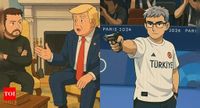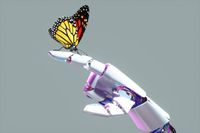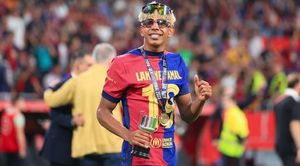In an exciting twist for fans of animation and artificial intelligence, OpenAI has rolled out an upgrade to its GPT-4o model, allowing users to create stunning images in the iconic style of Studio Ghibli. This new feature has sparked a social media frenzy, with users transforming their photos into whimsical Ghibli-style portraits, captivating both anime enthusiasts and casual users alike.
Studio Ghibli, a beloved Japanese animation studio founded in 1985 by visionary filmmakers Hayao Miyazaki, Isao Takahata, and Toshio Suzuki, is renowned for its enchanting hand-drawn animations and emotionally rich storytelling. The name "Ghibli" itself is derived from the Libyan Arabic word for a hot desert wind and also references an Italian aircraft used during World War II, symbolizing a fresh breeze in the anime industry.
The Ghibli portrait style is characterized by its hand-drawn characters, pastel color palettes, intricate details, and a magical sense of wonder. It’s no surprise that this aesthetic has resonated with a wide audience, especially as a recent report from the World Population Review indicates that around 72% of people in the United States watch anime regularly.
With the introduction of the "Images in ChatGPT" feature, users can easily upload their photos and request a transformation into Ghibli-style images. This capability has unleashed a wave of creativity across social media platforms, where users are sharing their Ghibli portraits and marveling at the results.
Since the feature's launch on March 25, 2025, users have embraced the opportunity to convert everything from family photos to iconic memes into Ghibli art. One enthusiastic user on X remarked, "Tremendous alpha right now in sending your wife photos of yall converted to Studio Ghibli anime," highlighting the playful nature of the trend. Another user on Threads expressed their excitement, stating they were "in love with ChatGPT's new image editing feature" and could now turn all their family photos into Ghibli portraits.
However, not everyone is thrilled with the new trend. Some critics have dismissed the AI-generated images as "AI slop," indicating a divide among admirers of the original Ghibli works and those who appreciate the novelty of AI art. OpenAI has acknowledged this mixed reception, noting that while the feature allows for creative expression, it also comes with the responsibility to maintain ethical standards. The company has implemented measures to block requests for images that may violate content policies, ensuring that harmful content is not generated.
In a further intersection of AI art and cryptocurrency, users have begun minting memecoins based on their Ghibli-style avatars on the Solana-based launchpad Pump.fun. Following the rollout of the image feature, tokens such as Ghibli Sigma (GIGMA), Ghibli Rizzler (GRIZLLER), and Ghibli Mona Lisa (GLisa) appeared within hours, riding a wave of meme-fueled hype. GIGMA, for instance, briefly surged to over $15,000 in market cap before experiencing a 30% increase from its highs, showcasing the volatile nature of such speculative investments.
Despite the excitement, the landscape of memecoins is fraught with risks. Pump.fun has garnered a reputation for being a breeding ground for low-effort, high-volatility coins, often leading to disastrous outcomes for latecomers. In February 2025, the platform faced legal issues when it received a cease and desist letter from Burwick Law and Wolf Popper LLP, claiming that users had created over 200 spoof tokens imitating the firms’ names and logos. This situation underscores the potential dangers associated with trading in unregulated markets.
As the Ghibli portrait phenomenon continues to gain momentum, it raises questions about the future of AI-generated art and its implications for the animation industry. Will this trend lead to a deeper appreciation for the original works of Studio Ghibli, or will it dilute the artistry that fans have come to cherish? Only time will tell.
In the meantime, the fusion of AI technology and creative expression is undeniably captivating. For many, the ability to see themselves or their loved ones reimagined as characters in a Ghibli film is a delightful experience. As users share their creations online, the trend not only celebrates the artistry of Studio Ghibli but also highlights the innovative capabilities of AI.
As OpenAI continues to refine its models and expand its features, the possibilities for creative expression seem limitless. The Ghibli portrait trend is just one example of how technology can inspire and engage audiences in new and unexpected ways, merging the realms of animation, art, and artificial intelligence.






